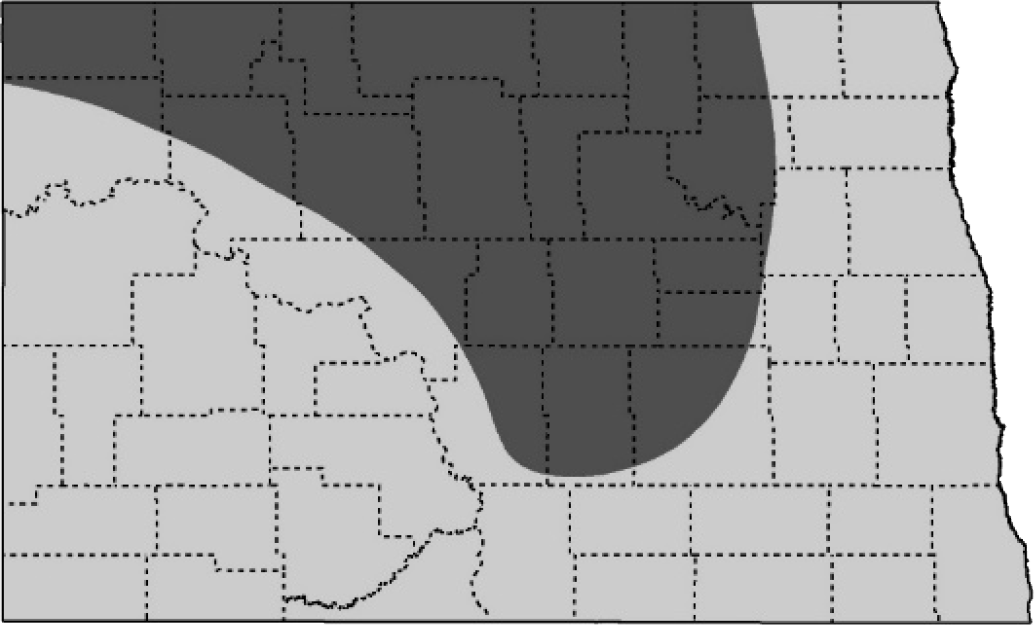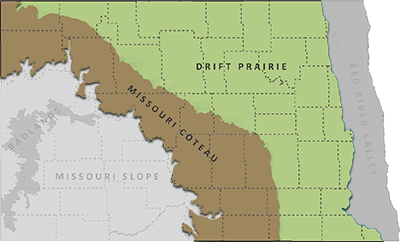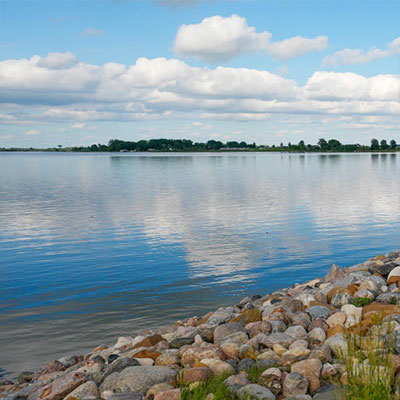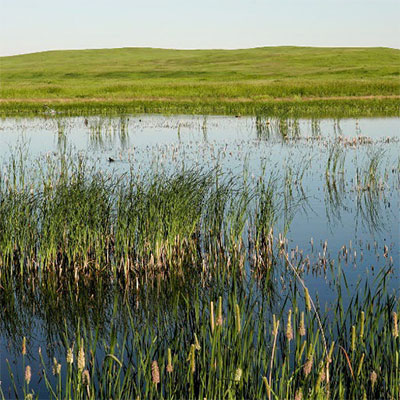Horned Grebe

NDGF
L 14”, WS 18”, 1 lb. A straight black bill with a white tip, black head with solid yellow patch, reddish neck, and scaly gray back.
Status in North Dakota
Occurs in North Dakota from early April to mid-November. Peak breeding season June to early August.
Reason for SWAP Designation
Globally imperiled (SGCN a.).
ND ranks 2nd out of 4 states for highest percent of the global population during the breeding season (eBird).
The peak week for Horned Grebe migration in ND (~26-April) hosts >10% (11.43) of the global population.
Holarctic, large population and large geographic range.
The Horned Grebe is thought to be declining precipitously in North America and Europe.
ND has high stewardship responsibility for this species.
Threats
Loss and degradation of wetlands, drainage and wetland consolidation.
Hydrologic shifts in wetlands of the PPR due to wetland consolidation and drainage, climate and land use changes (i.e. lakeification).
Classified as climate-endangered, Horned Grebe is projected to lose more than half of its current distribution by 2050, with no net gains of new areas (Audubon).
Increasing applications of agrochemicals and adverse impacts to water quality, the wetland vegetative community, and the aquatic invertebrate community.
More frequent or intense harmful algal blooms.
Aquatic nuisance species spreading and damaging wetland ecosystems.
Collisions with human-made structures (e.g. overhead lines, wind turbines).
Research and Monitoring
Habitat requirements and demographics have been broadly researched but little effort in North Dakota.
Additional information is needed on migration and wintering behaviors.
eBird and Partners in Flight Databases are key sources of information on distribution and population trends.
Poor detection on the Breeding Bird Survey.
The most recent colonial waterbird inventory in ND was conducted in 2014-2015.
Six single nesting pairs were counted but the survey may have missed nesting birds.
Management Recommendations
- Maintain wetland complexes.
- Identify and target high priority landscapes, habitats, and staging areas for protection.
- Prevent and remove encroachment of woody vegetation around wetlands.
- Discourage wetland tillage and protect from drainage.
- Follow aquatic nuisance species rules and regulations.
- Follow beneficial or best practices during the design, siting, construction, operation, and maintenance of tall structures (e.g. transmission lines, communication towers, wind turbines).




